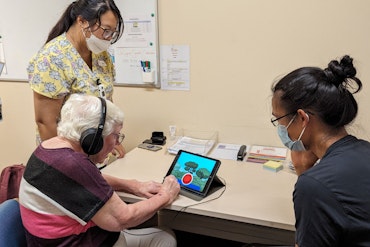Hospitalisation for end-of-life care — what to expect
As palliative care-related hospitalisation rates increase, Australia contends with a growing area of concern.
![<p>The Palliative Care Services in Australia report revealed that palliative care recipients’ hospitalisation rate has continued to increase. [Source: Australian Institute of Health and Welfare via iStock]</p>](https://agedcareguide-assets.imgix.net/news/articles/wp/palliacareoutcome__1112.jpg?fm=pjpg&format=auto&w=550&q=65)
The Palliative Care Services in Australia report revealed that palliative care recipients’ hospitalisation rate has continued to increase. [Source: Australian Institute of Health and Welfare via iStock]
Key points:
- Australia is on track for a 50 percent increase in demand for palliative care and a doubling in need by 2050, according to a joint report released by KPMG and Palliative Care Australia
- Palliative care is also referred to as ‘end-of-life care’ and is intended to provide those with life-threatening conditions a better quality of life through support and professional interventions
- Newly released data from the Australia Institute of Health and Welfare has shown how many people are affected by or receive palliative care amidst concerns of an increasingly ageing population
Policy-makers, palliative care providers, researchers and the general public are now able to understand more about the amount and nature of palliative care activity in the Australian healthcare sector.
A new report from the Australian Institute of Health and Welfare has revealed that hospitalisations continue to increase. Palliative Care Australia Chief Executive Officer Camilla Rowland said this data is an important piece of the puzzle as the government progresses reforms in primary health and aged care.
“We are consistently seeing the number of palliative care-related hospitalisations increasing at a faster rate than for all hospitalisations — a 29 percent increase compared with a 10 percent overall increase over the seven years up to 2021 – ‘22,” Ms Rowland said.
The CEO added that the average length of a stay was nearly twice as long; 10.3 days for palliative care compared to 5.7 days for all hospitalisations.
“Increasing hospitalisations have a huge impact on the workings of our health system and perhaps means that people aren’t getting the choice they deserve at the end of their life.
Of the 61,100 patients who received palliative care in 2022 from the 180 palliative care services participating in the Australian Palliative Care Outcomes Collaboration program, approximately one in two patients died — 67 percent died in hospitals, 22 percent had passed away at home and 10 percent in a residential aged care facility.
“For most people with a life-limiting illness, whether they are living at home or in an aged care facility — local [general practitioners, nurses and allied health professionals can deliver the palliative care needed outside of the hospital and specialist palliative care system, but many don’t have the training to do so — that needs to change,” Ms Rowland said.
“With our ageing population and growing burden of chronic disease, Australia is on track for a 50 percent increase in demand for palliative care and a doubling in need by 2050.
“Death and the dying process touches us all, whether we are the one with a life-limiting illness, a carer or a loved one dealing with grief — more and more Australian families need the support of palliative care.”
PCA has provided a public list of available palliative care training and education resources, such as:
To read the AIHW palliative care report in its entirety, please refer to the online data snapshot.
Let the team at Talking Aged Care know your thoughts on or experiences with palliative care in Australia. Additionally, please subscribe to the FREE weekly newsletter for more information, news and updates.
To search for an aged care facility that offers palliative care, please visit the Aged Care Guide finder.
Related content:























